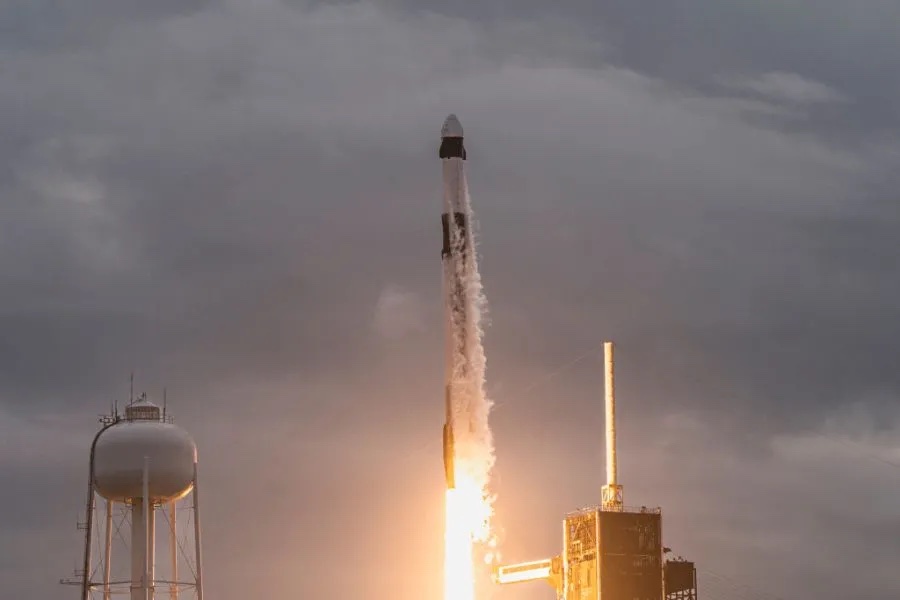In the years since Russia’s invasion of Ukraine, the west has been forced to tackle the question of national defense with a renewed sense of urgency. As Cold War strategic planners appreciated in the last century, hostile forces can approach not just from underwater, land, sea and air, but also through space.
On August 9 in the US, Elon Musk’s Space X launched a Falcon 9 rocket from a space force base located in California. Dubbed the “Arctic satellite broadband mission” (ASBM), the rocket itself was transporting two Northrop Grumman-built satellites, built for Space Norway in collaboration with the Norwegian Ministry of Defense and designed to orbit above the North Pole. Tilted at a steep angle relative to the Earth’s equator, the satellites’ highly elliptical orbit trajectory will enhance their ability to reach the remotest parts of the Northern Polar Region. ASBM will extend mobile broadband coverage in the Arctic region, making it easier both for military operators and civilian communities to communicate.
This mission is a strategic investment. Norway and the United States are Nato partners who both understand that the Arctic is a geopolitically competitive environment. Having an enhanced situational awareness is integral to regional defense and strategic planning. US and Nato defense planners are acutely aware that the ability to detect, track and trace and potentially defeat incoming missile, drone and underwater attacks depends on possessing communication and sensory capabilities capable of providing a truly comprehensive view of the Arctic. In 2023, a Chinese high altitude spy balloon slipped into Alaskan airspace and was eventually shot down over the Atlantic Ocean after drifting across North America.
The Arctic region is over 5 million square miles, half of which is, in one form or another, controlled by the Russian Federation. It is about the same size as the Antarctic continent but crucially, particularly in the case of the North American Arctic, populated by scattered communities with towns and cities few and far between.
;768:[300×250,336×280,320×100];0:[300×250,320×100,320×50]”]As the relationship with the Russian Federation deteriorated further in the wake of Putin’s invasion of Ukraine in 2022, Finland and Sweden broke with caution and joined Nato. Moscow meanwhile has consolidated further its commercial and military relationships with China, India, North Korea and others. The end result is that the Arctic is being bifurcated between a Russian-Asian Arctic and a Euro-American portion.
In the remote and vast North American Arctic in particular, robust satellite coverage and enhanced situational awareness is essential given the sparsity of infrastructure and centers of population.
In July, a joint sortie of Chinese and Russian long-range bombers entered the Alaskan air defense identification zone (ADIZ). It was the first time two Chinese H-6 bomber planes had been recorded in the zone. The head of US Northern Command (NORTHCOM) and North American Aerospace Defense Command (NORAD) used this as an example earlier this month to emphasize how important it was to maintain a high-level awareness of who and what was coming into or passing through the North American Arctic.
Russia continues to invest in strategic infrastructure and recently unveiled an extended runway at the Tempe air base in the New Siberian Islands. The runway’s length would allow it to accommodate long-range nuclear bombers and images of the construction work were provided by satellite imagery. This all matters because Russia cannot compete with the US and partners in terms of aerospace and satellite communications. From Moscow’s point of view, Russia needs to project air and sea power across the Arctic zone of the Russian Federation and beyond. Russia maintains a formidable ice-breaker fleet, which dwarfs the US’s aging and incident-prone vessels. But none of this is invulnerable as Ukrainian drones can strike Russian military assets north of the Arctic circle.
Regardless of who takes the White House in November, they are likely to conclude three things: first, that China is an important and capable Arctic actor; second, that Russia continues to modernize its military infrastructure and finally, the US will need to work with its partners including the UK and Norway to ensure that it enjoys the highest levels of situational awareness and satellite-based capabilities.
;768:[300×250,336×280,320×100];0:[300×250,320×100,320×50]”]Two of the world’s largest militaries — China and Russia — are working with one another and will continue to conduct joint patrols and missions in and around the Alaskan airspace and waters. This was reaffirmed in a Department of Defense Arctic strategy paper in July and coincides with US Space Force revealing a multi-billion-dollar plan to launch smaller and cheaper low earth orbit satellites, designed to better protect the US and allies from anti-satellite missile systems. Keeping those connections are vital as Nato parties seek to bolster their military and satellite communication readiness across the circumpolar Arctic.
This article was originally published on The Spectator’s UK website.


























Leave a Reply